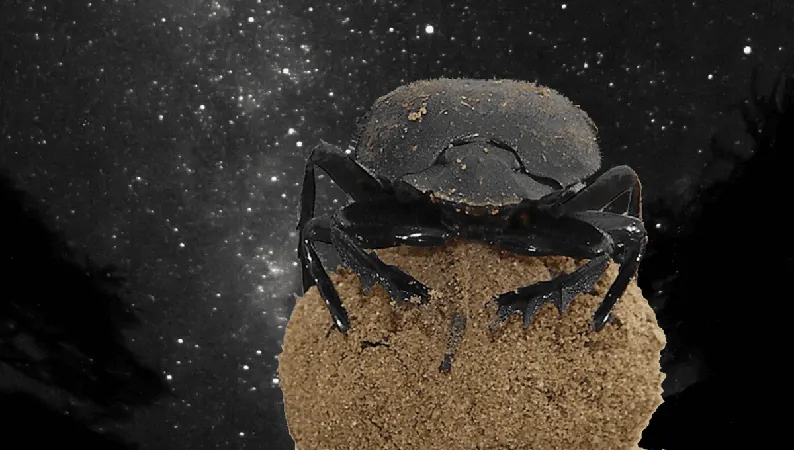
Insects Navigating by the Stars: Dung Beetles and Their Stellar Journey
2025-08-20
Author: Ling
Insects Using the Milky Way for Navigation
In a stunning revelation, researchers uncovered that certain insects, namely dung beetles, utilize the Milky Way for orientation. This astonishing discovery emerged back in 2013, showcasing the incredible adaptability and intelligence of these small creatures.
How Dung Beetles Navigate Under the Night Sky
The African ball-rolling dung beetles (Scarabaeus satyrus) employ not just the Sun and Moon, but also the unique polarization patterns of the night sky to forge straight paths, steering clear of competition near dung piles.
To investigate this further, scientists conducted intriguing experiments at the Wits Planetarium. They outfitted the beetles with hats that blocked out specific celestial views, enabling them to analyze how this affected their ability to roll dung balls on clear nights.
A Stellar Performance on Clear Nights
The results were striking! The beetles excelled at navigating their dung balls beneath a starry sky but struggled when the skies were overcast. In fact, they showed remarkable orientation prowess under a full blanket of stars, proving their dependence on celestial cues.
The Dance of the Dung Beetles
Interestingly, when these beetles found themselves disoriented, they performed a little ‘orientation dance’ atop their dung balls. This quirky behavior seems to help them locate light sources that guide them back to their intended paths.
A Historic Discovery for Insect Navigation
The research team highlighted that this is the first compelling evidence showing insects can use the starry sky for navigation, marking a significant milestone in our understanding of animal behavior.
The Bogong Moths: Masters of Star Navigation
In a related discovery, the Bogong moths (Agrotis infusa) were found to travel up to 1,000 kilometers (621 miles) by harnessing the night sky. Experiments conducted in planetarium settings demonstrated that these moths flew accurately toward their migration destinations when the stars were aligned as they would appear naturally.
When the positions of the stars were inverted, these moths cleverly adjusted their course, reinforcing the astonishing navigational skills these animals possess.
A Lesson in Navigation for Humans Too
So, the next time you're searching for your parked car, just remember: if these tiny navigators can chart their courses by the stars, surely we can do a little better!

 Brasil (PT)
Brasil (PT)
 Canada (EN)
Canada (EN)
 Chile (ES)
Chile (ES)
 Česko (CS)
Česko (CS)
 대한민국 (KO)
대한민국 (KO)
 España (ES)
España (ES)
 France (FR)
France (FR)
 Hong Kong (EN)
Hong Kong (EN)
 Italia (IT)
Italia (IT)
 日本 (JA)
日本 (JA)
 Magyarország (HU)
Magyarország (HU)
 Norge (NO)
Norge (NO)
 Polska (PL)
Polska (PL)
 Schweiz (DE)
Schweiz (DE)
 Singapore (EN)
Singapore (EN)
 Sverige (SV)
Sverige (SV)
 Suomi (FI)
Suomi (FI)
 Türkiye (TR)
Türkiye (TR)
 الإمارات العربية المتحدة (AR)
الإمارات العربية المتحدة (AR)